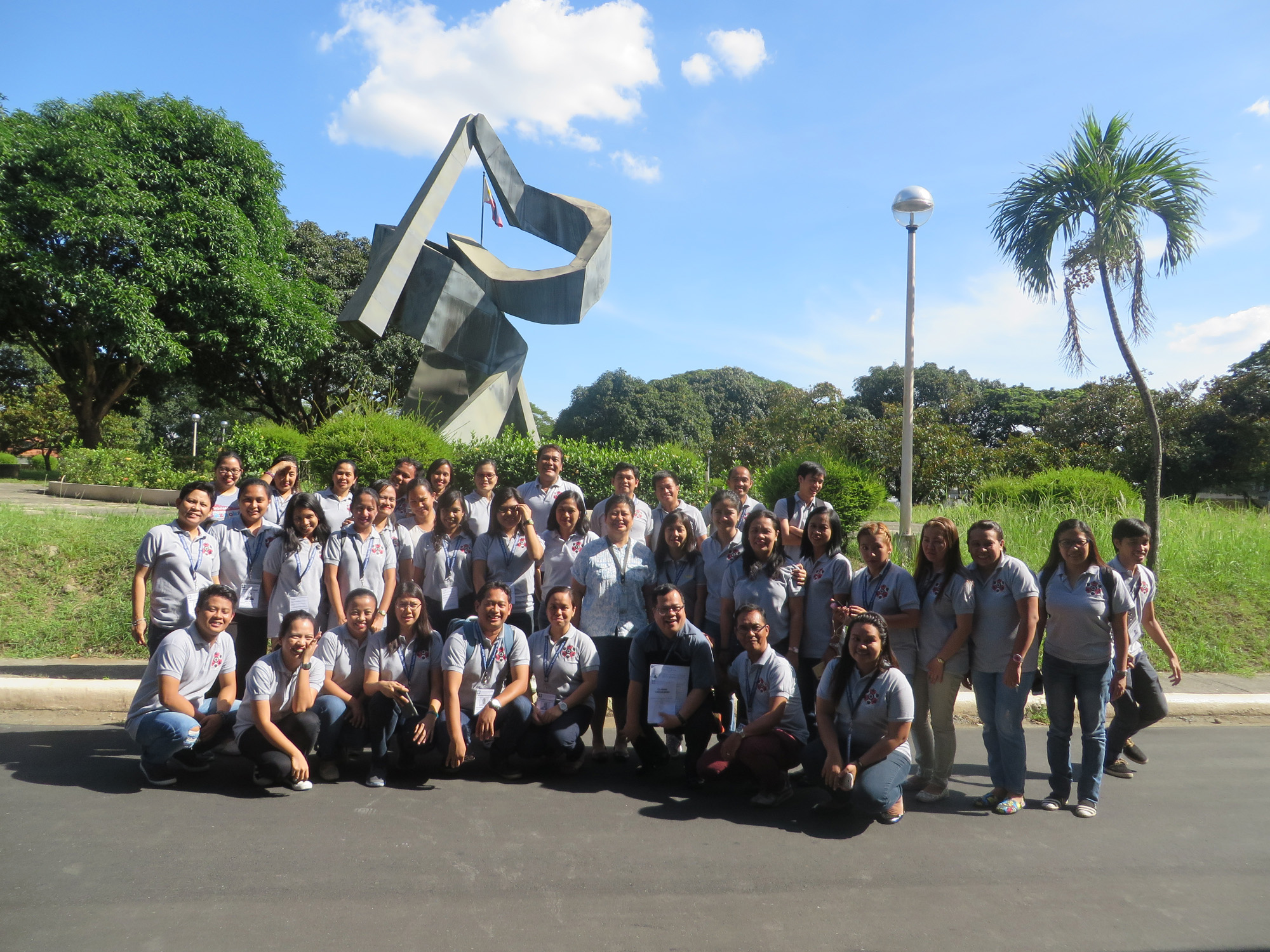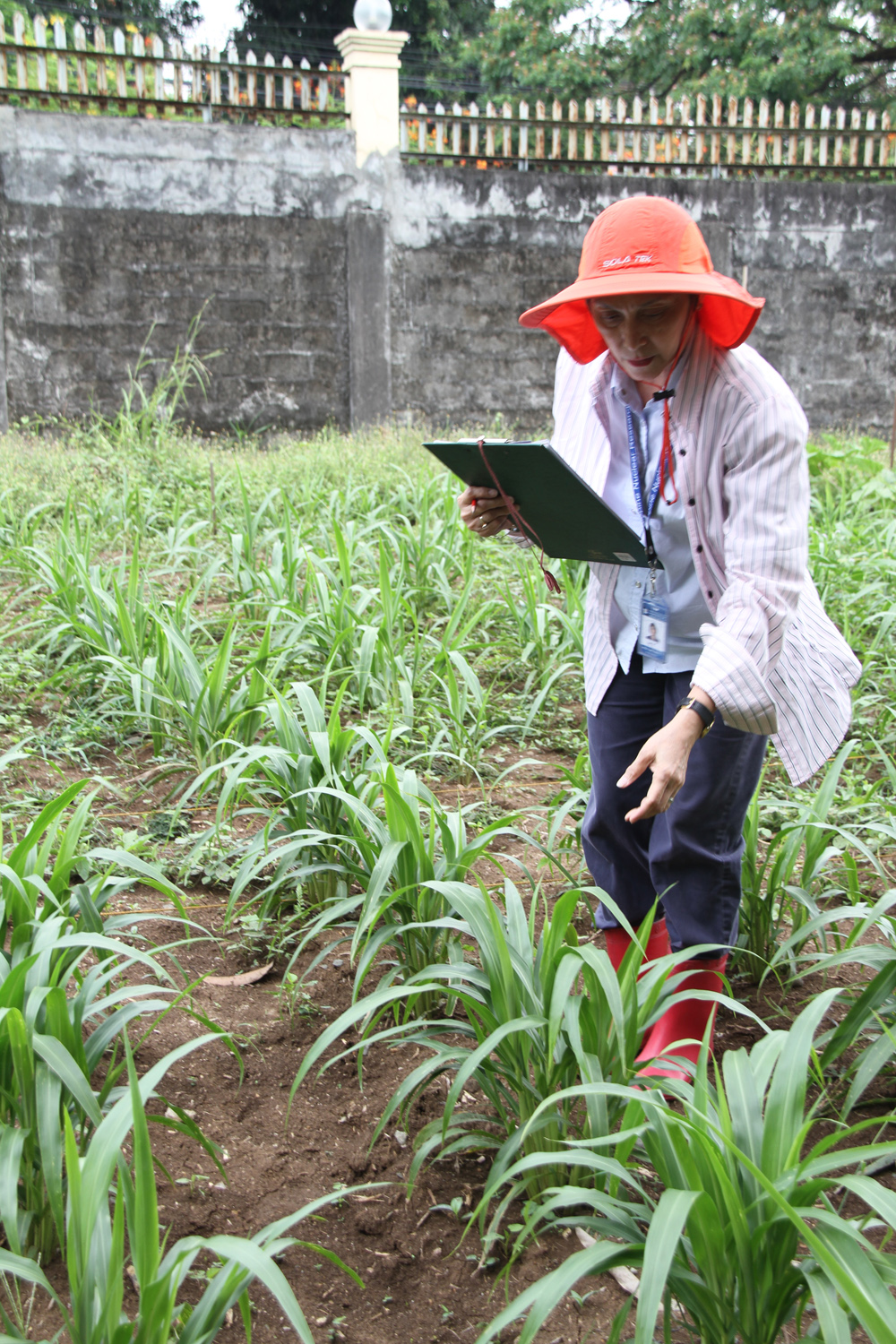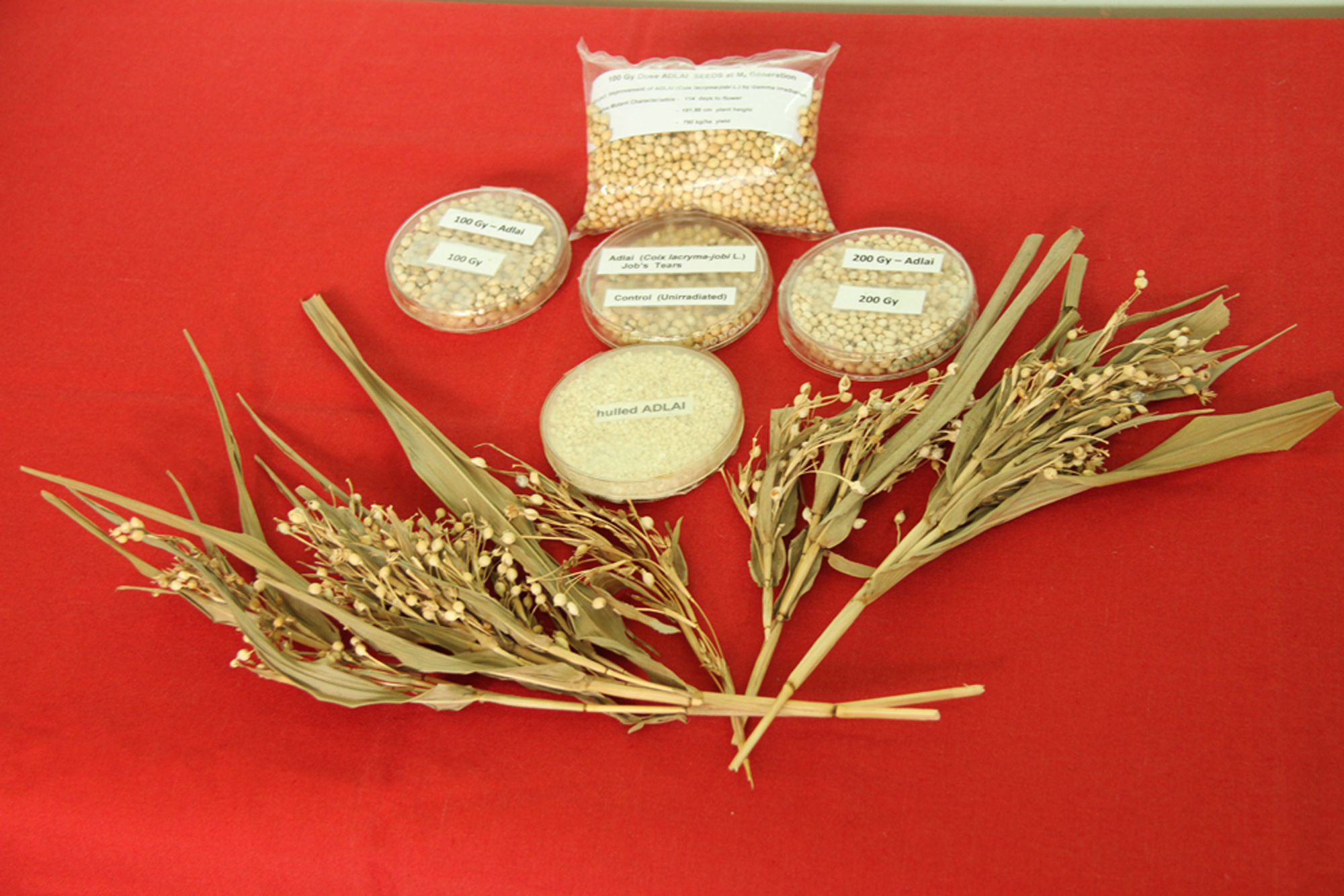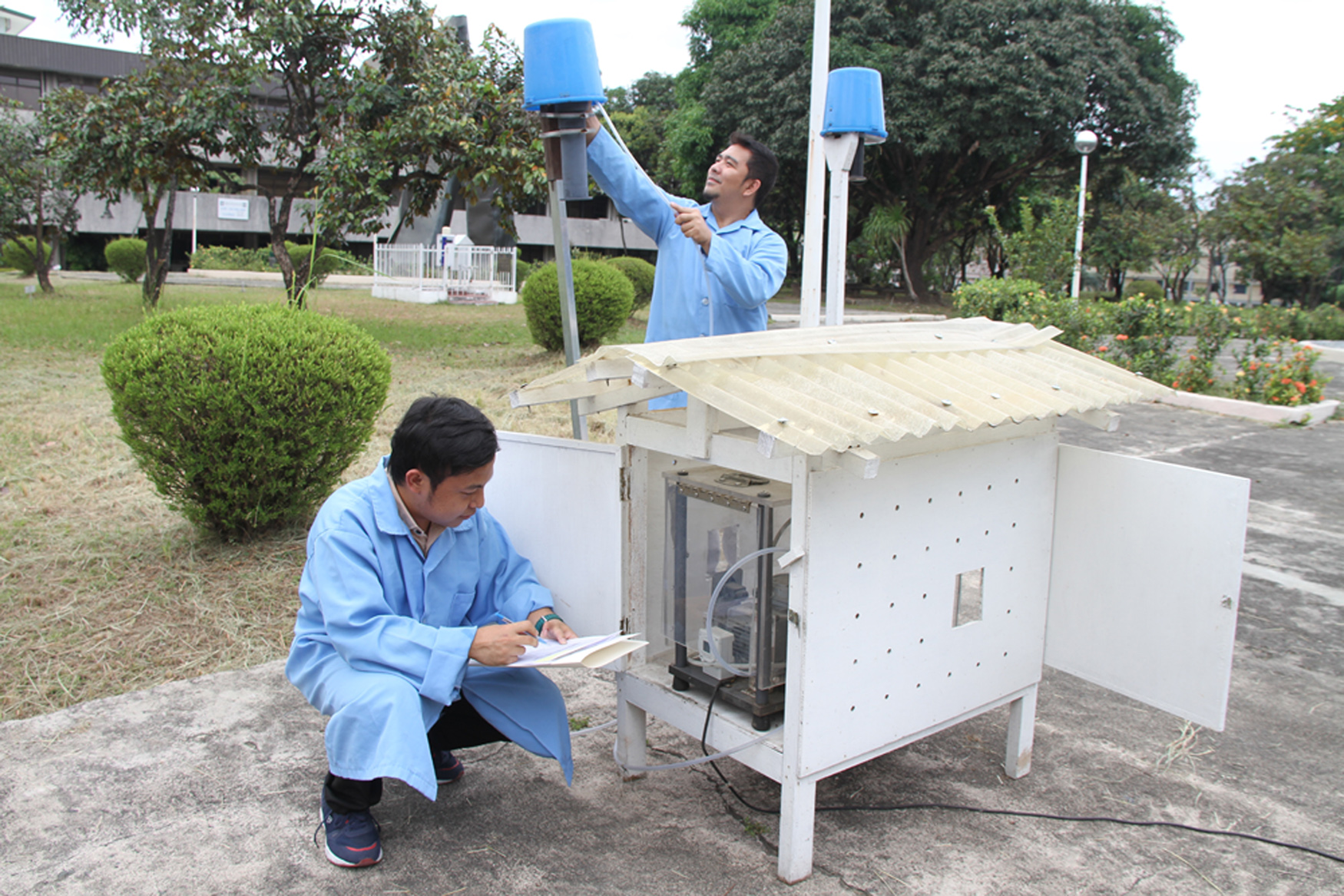instructors Complete the SNST and CNT Courses at PNRI
- Details

High school and college instructors graduated from the Seminar on Nuclear Science for Teachers (SNST) and Course on Nuclear Technology (CNT) conducted from April 17 to May 12, 2017 at the Department of Science and Technology - Philippine Nuclear Research Institute (DOST-PNRI)
Mutant Adlai as Alternative Staple Food Crop for Filipinos
- Details


Left: A PNRI researcher inspecting the putative mutant adlai at the PNRI experimental field
Right: Adlai seeds exposed to 100 and 200 gray (Gy) of gamma radiation
Mutant Adlai as Alternative Staple Food Crop for Filipinos
Agriculture research specialists from the Department of Science and Technology – Philippine Nuclear Research Institute (DOST-PNRI) continue to improve its mutant varieties of Adlai or Job’s Tears, an alternative source of food to its better-known cousin crops such as rice and corn.
Adlai is twice as rich in protein as rice, and is known among indigenous communities throughout Asia as a source of flour, coffee, tea, wine, beer and vinegar, among other products. It has anti-tumor and other medicinal properties which can help mitigate the symptoms of allergies, and diabetes. Moreover, Adlai is also known for its resilience against extreme conditions brought about by climate change.
PNRI researchers are currently breeding mutant crops of the Ginampay variety of Adlai. The putative mutants are already in the fifth generation. After irradiating the seeds with doses of 100 to 200 gray (Gy), they are planted and grown for further observation. The Adlai crops are to be developed up to the eighth generation to complete the mutation breeding process. The experimental crops matured up to 28 days earlier than the unirradiated variety, while also being 17-24% shorter.
Using gamma radiation, PNRI has been working since 2013 to improve the agronomic traits of Adlai by making mutant varieties that yield more grain and mature earlier, while also having shorter heights to make the crops more resistant to lodging during typhoons.
Aside from developing mutant varieties, PNRI also conducted studies to improve the fertilizer, soil nutrient and water management practices for Adlai. The field experiments were done in partnership with the Bureau of Soils and Water Management (BSWM) under an International Atomic Energy Agency (IAEA) project on “Enhancing Productivity of Locally-Underused Crops Through Dissemination of Mutated Germplasm and Evaluation on Soil, Nutrient and Water Management Practices”. These improvements will also complement the Food Staples Sufficiency Program of the Department of Agriculture (DA), which encourages the diversification of staple food crops beyond rice by increasing production, ensuring market availability and lowering its prices.
Learn more about PNRI's mutation breeding research on adlai, an alternative staple food crop, in this episode of DOSTv, featuring Senior Science Research Specialist Ms. Ana Maria Veluz of the PNRI Agriculture Research Section
PNRI Conducts Air Pollution Studies with Nuclear Analytical Techniques
- Details

PNRI Gent Sampler set-up for air pollution monitoring
PNRI Conducts Air Pollution Studies with Nuclear Analytical Techniques
In the face of rising industrialization and pollution in urban areas, the Department of Science and Technology - Philippine Nuclear Research Institute (DOST-PNRI) takes advantage of the unique capabilities of nuclear analytical techniques for air pollution studies in Metro Manila and beyond.
Air pollution caused by particulates in the atmosphere is of great concern all over the world, as well as in the Philippines. When inhaled, fine particulates (matter smaller than 2.5 micrometers (μm) or PM2.5) can penetrate even deeper into the lungs and eventually into the bloodstream, which can cause heart and lung diseases, cancer and even death.
Black carbon, which forms much of the fine air particulate pollutants in Metro Manila, comes mostly from burning biomass and residential refuse, and compounded by emissions from vehicles and industrial establishments in urban areas. Alongside black carbon, lead particulates are another threat to public health, as the poisonous metal can damage the nervous systems of young children, leading to brain or blood disorders.
In a world beset by record–breaking temperatures and storms, air pollution is also a major contributor to global warming and the climate change phenomena feared across the globe. Aside from greenhouse gases such as carbon dioxide, black carbon is also among the culprits in gradually rising average temperatures.
But unlike greenhouse gases which stay in the atmosphere for up to 40 years, black carbon only lasts for several weeks to around a month or more. Reducing black carbon emissions will have an immediate effect on the overall composition of the atmosphere, helping to mitigate global warming.
Still, while most measurements can only identify how much particulate matter there is in the air, few are capable of classifying the pollutants in the air, let alone objectively able to trace their origins. The varieties of sources make it impossible to simply collect and weigh the air particulates and draw conclusions – and this is where nuclear applications come in.
As part of its studies on the application of nuclear and nuclear-related analytical techniques in multi-elemental data and analysis, PNRI engages in air pollution source identification and apportionment studies which aim to determine what the sources of pollution are, how much is the contribution of each pollutant and where these are coming from. PNRI’s Nuclear Analytical Techniques Application Section performs multi-elemental and non-destructive analysis of samples faster than conventional methods.
In cooperation with the Department of Environment and Natural Resources – Environmental Management Bureau (DENR-EMB) and the Australian Nuclear Science and Technology Organisation (ANSTO), PNRI used Gent Samplers to collect air particulates twice a week in five air polluton monitoring stations in Quezon City, Valenzuela, Mandaluyong, Pasig, and Bulacan.
To identify the sources of air pollutants and how much each contributes to the pollution, PNRI uses receptor modeling to trace the pollutants from the environment to the source. PNRI scientists are also able to trace the path of pollutants by analyzing wind direction for particulates carried into the air.
The latest results show that vehicle emissions comprise around half of the air pollutants in the metropolis, followed by industrial emissions, which form almost a third of the pollutants, and secondary sulfur, which is almost a quarter of all the air pollutants. The rest of the air pollutants are composed of smoke and fine soil.
Aside from generating basic data for air quality management, continuous air pollution monitoring is also helpful in documenting impact of government policies such as reducing lead levels coinciding with the phase-out of leaded-gasoline. Further studies will also be done to help formulate measures to mitigate the problem in areas with high levels of lead pollution.
“Addressing problems regarding traffic-related activities can greatly reduce our fine particulate pollution problems including the black carbon which can bring about better air quality in the area, resulting to a healthier air to breath by the general public and contributing to the mitigation of climate change,” said Dr. Preciosa Corazon Pabroa, project leader and head of the PNRI Nuclear Analytical Techniques Application Section.
PNRI’s air pollution studies are also being conducted in cooperation with local and international counterparts. In 2007, the Institute engaged in a technical cooperation project with the International Atomic Energy Agency in a joint effort with other countries in the Asia-Pacific region to build an Asia–Pacific Aerosol Database (A–PAD) for fine and coarse air pollutants.
The Institute also collaborates with the Partnership for Clean Air (PCA) for air pollution studies through a project with the European Union (EU) and the GFA Consulting Group. Through a new agreement with the PCA last June 2016, PNRI is planning to establish three new monitoring stations in Taguig, Makati and Valenzuela.
Learn more about PNRI's nuclear techniques for air pollution monitoring in this episode of DOSTv on April 3, 2017, featuring PNRI Nuclear Analytical Techniques Application Section Head Dr. Preciosa Corazon Pabroa.
PNRI at DOSTv - Receptor Binding Assay for Red Tide Monitoring
- Details
Learn more about PNRI's research and development on the Receptor Binding Assay (RBA) technology for Harmful Algal Blooms, more commonly known as "red tide" in this episode of DOSTv on March 27, 2017, featuring PNRI Chemistry Research Section Senior Science Research Specialist Mr. Rhett Simon Tabbada.












































